Polyester and polyethylene are two of the most widely used polymers in the world today. While both belong to the vast polymer family – and are thus types of plastic – they possess fundamentally unique properties that make them suited for vastly different applications. This article will thoroughly explore the key differences between polyester and polyethylene, covering their distinct chemical compositions, mechanical characteristics, typical uses in products like sheets, fabrics, clothing, and ropes, and their respective environmental impacts. We will clarify whether is polyester the same as polyethylene, explore the difference between polymer and polyester, and shed light on why you might choose polyethylene or polyester plastic for specific needs.
What are Polyester and Polyethylene?
Before delving into the difference between polyester and polyethylene, let’s define each polymer individually. Both are synthetic plastics, but their origins and fundamental structures set them apart.
Polyester
Polyester refers to a category of synthetic polymers characterized by the presence of ester functional groups (-COO-) within their main molecular chain. It is typically formed through a chemical reaction involving a dicarboxylic acid and a diol (a type of alcohol). The most common type of polyester is Polyethylene Terephthalate (PET), widely known for beverage bottles, but also extensively used in fibers and textiles.
Polyester is highly valued for its exceptional durability, versatility, and ease of maintenance. It is inherently resistant to shrinking, stretching, wrinkling, and mildew, making it an ideal material for textiles that need to be long-lasting and resilient. Polyester is widely used in fabrics, clothing (especially activewear and outerwear), upholstery, and various industrial applications like ropes, straps, and tire cords. Notably, polyester fibers can also be recycled, particularly from post-consumer bottles.
Polyethylene
Polyethylene (PE), on the other hand, is a much simpler polymer derived solely from the polymerization of ethylene monomers (C2H4). It is the most common plastic in the world due to its immense versatility, strength, flexibility (depending on type), and resistance to moisture and chemicals. Its production was revolutionized by catalysts like Ziegler-Natta, allowing for controlled polymerization processes.
Polyethylene is produced in various densities, leading to different types of polyethylene with distinct properties:
- Low-Density Polyethylene (LDPE): Characterized by significant branching in its molecular structure, LDPE is highly flexible, soft, and transparent. It is commonly employed in applications such as LDPE film for packaging, plastic bags, and squeeze bottles, where material flexibility is paramount.
- High-Density Polyethylene (HDPE): possesses a more linear molecular structure with minimal branching, resulting in higher density, stiffness, and rigidity. HDPE is extensively utilized in sturdier applications such as HDPE pipe systems, milk jugs, detergent bottles, and various rigid containers. This robust material is a common point of comparison when discussing “HDPE vs. polyester.”
- Linear Low-Density Polyethylene (LLDPE): As a copolymer characterized by numerous short, uniform branches, LLDPE provides a distinct balance of flexibility, strength, and superior puncture resistance when compared to Low-Density Polyethylene (LDPE). This makes it highly suitable for applications such as LLDPE film in packaging and for the production of heavy-duty bags.
- Other specialized types of polyethylene include UHMWPE (Ultra-high-molecular-weight polyethylene) known for extreme abrasion resistance, and PEX (Cross-linked polyethylene) used for durable plumbing pipes.
Polyethylene in all its types is recyclable, contributing to its environmental appeal in sustainable projects.
Polyester vs. Polyethylene: Key Differences in Properties
When comparing polyester vs. polyethylene, it’s crucial to understand that while both are essential synthetic polymers (and thus plastics), their distinct chemical structures lead to markedly different properties and optimal applications. The core difference between polyester and polyethylene lies at their molecular level.
1. Composition and Chemical Structure
- Polyester: As the name suggests, polyester polymers contain ester functional groups within their backbone. This more complex chemical structure often involves aromatic rings (e.g., in PET), which contribute to its inherent stiffness, thermal stability, and strength. This makes polyester a more complex polymer than polyethylene.
- Polyethylene: In contrast, polyethylene is a much simpler polymer composed solely of repeated ethylene units (-CH2-CH2-). Its simplicity in chemical structure directly contributes to its flexibility and chemical inertness. It does not contain ester functional groups, immediately highlighting “is polyethylene a polyester?” – the answer is definitively no. Is polyethylene the same as polyester? No, not at a fundamental chemical level.
Generally, polyester is stronger, more rigid, and more heat-resistant, whereas polyethylene tends to be lighter (per unit volume) and more flexible, especially in its LDPE form.
2. Mechanical Properties
- Polyester: Possesses excellent tensile strength, high stiffness, and good resistance to stretching and abrasion. This makes it highly suitable for applications requiring dimensional stability and high strength, such as durable fabrics, clothing, ropes, and straps.
- Polyethylene: The mechanical properties of polyethylene vary significantly by density. HDPE is known for high tensile strength, rigidity, and impact resistance, making it strong but more flexible and less heat-resistant than polyester. LDPE and LLDPE are characterized by their extreme flexibility, pliability, and lightness, making them ideal for applications requiring elasticity and tear resistance like plastic films and flexible sheets.
3. Thermal Properties
- Polyester: Generally has a significantly higher melting point (e.g., PET melts around 250-260°C / 482-500°F). This superior heat resistance makes polyester suitable for applications exposed to higher temperatures, such as hot-wash fabrics, oven bags, or electrical insulation.
- Polyethylene: Has a much lower melting point range (e.g., LDPE 105-115°C / 221-239°F; HDPE 120-130°C / 248-266°F). While polyethylene excels in low-temperature flexibility (remaining tough even in freezing conditions), its lower heat resistance limits its use in high-temperature environments where polyester would perform better.
4. Chemical Resistance
- Polyester: Offers good resistance to many chemicals, solvents, and UV radiation, making it durable in outdoor and industrial environments. It is resistant to acids and bases.
- Polyethylene: Exhibits excellent resistance to a broad range of chemicals, acids, bases, and salts. However, its resistance to certain organic solvents can be less than that of polyester, and it is generally more susceptible to UV degradation without stabilizers.
5. Transparency and Electrical Properties
- Transparency: Polyester (especially PET) can be highly transparent, making it ideal for clear bottles. Polyethylene varies; HDPE is opaque, while LDPE and LLDPE can range from translucent to clear, commonly used in transparent films.
- Electrical Properties: Both are good electrical insulators. Polyethylene is widely used for electrical insulation in wires and cables due to its excellent dielectric properties. Polyester also provides good electrical insulation but may be more commonly found in specific electrical film applications.
Polyester vs. Polyethylene Sheets
The choice between polyester vs. polyethylene sheets largely depends on the required rigidity, temperature resistance, and specific application environment.
- Polyester sheets: Often used in environments requiring high dimensional stability, rigidity, and heat resistance, such as in electronics (e.g., circuit board substrates), solar panels (as backsheets), and certain industrial membranes or films where heat stability is critical. Polyester’s heat-resistant properties prevent deformation in contexts where polyethylene might melt or warp.
- Polyethylene sheets: Particularly HDPE sheets, are commonly used for outdoor and industrial applications because of their excellent resistance to UV radiation (when stabilized), chemicals, and moisture. They are highly suitable where flexibility, impact resistance, and durability are essential, such as in construction (vapor barriers, ground covers), agriculture (liners, pond liners), industrial packaging, cutting boards, and playground equipment. LDPE sheets are valued for their extreme flexibility in packaging films and liners.
Polyester vs. Polyethylene Fabric
The difference between polyester and polyethylene fabric is a key consideration in the textile industry, driven by their inherent properties.
- Polyester fabric: Is widely popular in the textile industry. It is commonly used in fashion, upholstery, sportswear, and industrial textiles due to its resilience, wrinkle resistance, and ability to retain shape. Polyester is durable, easy to dye, and retains color well, making it a popular choice for clothing that undergoes frequent use and washing. Its low water absorption means it dries quickly.
- Polyethylene fabric: Often referred to as polyolefin fabric, is less common in everyday apparel but highly valuable in specific applications. It is commonly used in products such as disposable gowns, medical fabrics (where softness, flexibility, and fluid resistance are required), filtration media, outdoor geotextiles, and other industrial applications where extreme moisture resistance, lightness, or specific functional properties are required more than aesthetic quality.
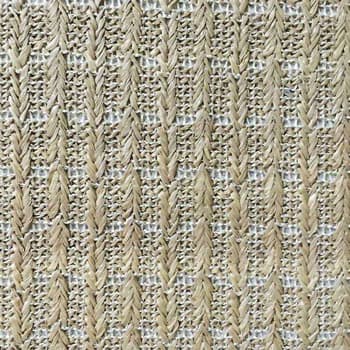
Polyester vs. Polyethylene Clothing
The comparison of polyester vs. polyethylene clothing highlights their distinct roles in the apparel industry.
- Polyester clothing: Is immensely popular because of its strength, easy-care properties (wrinkle resistance, quick drying), and resistance to shrinking or stretching. From activewear and outerwear to everyday garments and formal wear, polyester provides durability while retaining its shape and resisting fading, making it a staple in modern wardrobes.
- Polyethylene-based clothing: Is far less common in general apparel but appears in very specific, specialized settings. These include disposable protective apparel (e.g., medical isolation gowns, hazmat suits) where extreme water resistance, chemical barrier properties, or disposability are necessary. It’s also found in highly specialized clothing requiring extreme flexibility or specific thermal insulation for very cold environments. So, while you’re unlikely to find a polyethylene t-shirt, its unique properties make it invaluable for niche protective wear.
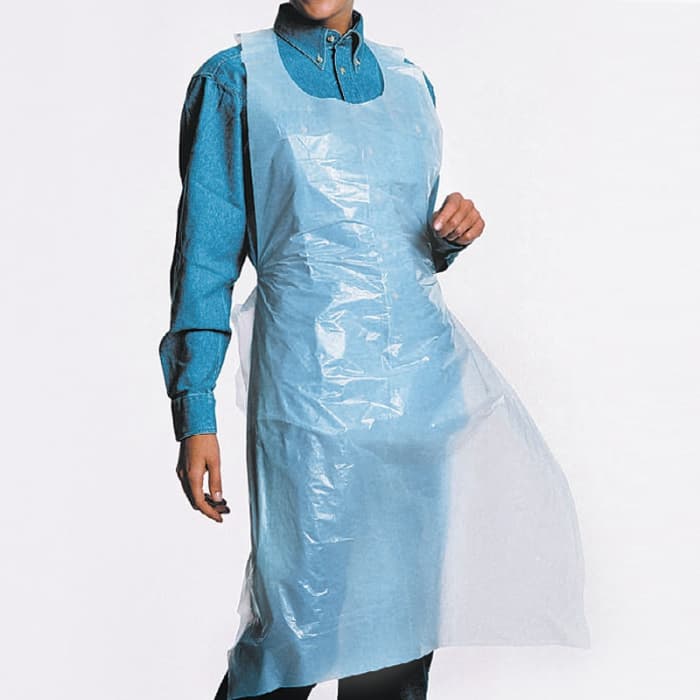
Polyester vs. Polyethylene Rope
When it comes to rope, polyester vs. polyethylene rope offers distinct performance characteristics suited for different environments.
- Polyester rope: Is often preferred for its higher tensile strength, excellent resistance to UV rays, and superior abrasion resistance, making it highly suitable for marine applications (dock lines, anchor lines), industrial rigging, climbing, and other outdoor uses where durability under stress and exposure to elements are critical. Polyester ropes absorb very little water, which helps them maintain their structural integrity, strength, and knot-holding ability even when wet.
- Polyethylene rope: Especially those made from HDPE or UHMWPE, are notably lightweight and (most types) float on water. This property makes them ideal for specific water-based applications like rescue lines, marker buoy lines, and water skiing tow ropes. However, traditional polyethylene ropes (e.g., standard HDPE) are generally less strong and durable than polyester ones, particularly in high-stress or prolonged UV-exposed environments, as polyethylene can degrade more readily under sunlight without stabilizers. UHMWPE ropes, however, offer exceptional strength and abrasion resistance, surpassing polyester in many high-performance applications, albeit at a higher cost.
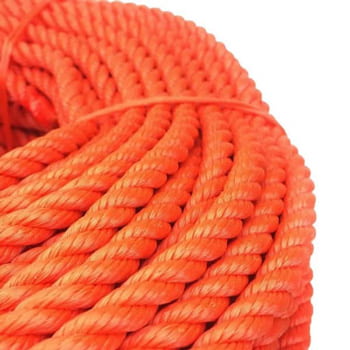
Environmental Impact and Recyclability: Polyester and Polyethylene
Both polyester and polyethylene are derived from petrochemicals, making their long-term environmental impact a significant concern. They are generally non-biodegradable and persist in the environment for very long periods. However, both polymers can be recycled, contributing to a reduced carbon footprint and lessening reliance on virgin materials.
- Polyester Recycling: Polyester has seen greater strides and more established infrastructure in recycling, particularly with post-consumer recycling efforts turning PET bottles and certain polyester textiles (like fleece) into new polyester products. This process reduces reliance on virgin polyester and helps mitigate plastic waste.
- Polyethylene Recycling: Polyethylene, particularly in the HDPE (#2) and LDPE (#4) categories, is widely recyclable. HDPE rigid containers have a high recycling rate and are valuable in the recycling market. However, LDPE and LLDPE films (like plastic bags) are often more difficult to repurpose in conventional curbside recycling programs due to their tendency to tangle machinery and their lower value in recycling markets, leading to them frequently being landfilled. Despite challenges, dedicated film recycling programs are growing.
Polyester vs. Polyethylene vs. Other Polymers
Polyester and polyethylene represent two significant types of synthetic polymers, but the plastic landscape is vast. Many other polymers are also used in similar or complementary applications, and understanding the difference between polymer and polyester (where polyester is a type of polymer) or polyethylene is key.
For example, polypropylene (PP) is another popular polyolefin with properties that often fall between polyethylene and polyester in terms of durability, rigidity, and flexibility. PP offers excellent chemical resistance and flexural fatigue strength, often used in packaging, medical equipment, and textiles that need a balance of flexibility and more durability than general polyethylene can provide, but perhaps less rigidity than polyester offers. Recognizing that all these are just different members of the polymer family is crucial.
Final Thoughts on Polyester vs. Polyethylene
When making a choice between polyester and polyethylene, the decision largely depends on the intended application and the required balance of properties. There is no single “better” plastic; instead, each excels in specific areas.
- Polyester’s high durability, excellent tensile strength, heat resistance, wrinkle resistance, and aesthetic appeal make it the go-to choice for durable fabrics, clothing, upholstery, and industrial textiles where dimensional stability and performance under stress are paramount.
- Polyethylene’s exceptional flexibility (especially LDPE and LLDPE), moisture resistance, chemical stability, and impact strength make it the preferred material for applications where pliability, barrier properties, and toughness are paramount, such as in sheets, plastic films, rigid containers (HDPE), and pipes.
By understanding the nuanced distinctions and the specific advantages of each of these versatile materials, manufacturers and consumers alike can make informed choices that best meet their performance needs, while also considering factors like cost, recyclability, and overall environmental impact. This deep dive into polyethylene vs. polyester empowers better material selection.
Summary Table
| Feature | Polyester | Polyethylene |
|---|---|---|
| Chemical Composition | Formed through a chemical reaction involving dicarboxylic acid and diols. Contains the ester functional group. | Made from ethylene monomers. |
| Structure | Includes ester linkages which contribute to durability and wrinkle resistance. | Density varies affecting flexibility and strength (e.g., LDPE, HDPE). |
| Strength & Durability | Excellent tensile strength, suitable for clothing, ropes, and straps. | Strong, particularly HDPE, but more flexible and less heat-resistant than polyester. |
| Flexibility | Stiffer, making it better for fabrics that retain shape, like clothing. | Extremely flexible, particularly LDPE, ideal for pliable applications like sheets and films. |
| Density | Generally higher. | Varies depending on the type (LDPE, HDPE). |
| Melting Point | Higher (approximately 250°C for PET). | Lower (110-130°C for LDPE). |
| Water Resistance | Good | Excellent |
| Applications | Clothing, upholstery, outdoor gear, ropes, industrial textiles | Packaging, plastic bags, films, milk jugs, detergent bottles, margarine tubs, garbage containers, water pipes, toys, waterproof layers (e.g., mattresses) |
| Advantages | Durable, heat-resistant, and aesthetically appealing. | Flexible, moisture-resistant, chemically stable. |
| Environmental Impact | Non-biodegradable, derived from petrochemicals. | Non-biodegradable, derived from petrochemicals. |
| Recyclability | Widely recycled, with processes to turn bottles and textiles into new products. | Recyclable, especially HDPE and LDPE, but lower value makes it more challenging to repurpose. |
Key Takeaways
- Polyester vs. Polyethylene Fabric: Polyester is ideal for durable, shape-retaining clothing and upholstery, while polyethylene fabric (polyolefin fabric) is suitable for disposable, water-resistant, flexible, or medical textiles.
- Polyester vs. Polyethylene Clothing: Polyester is preferred for long-lasting, easy-care garments, whereas polyethylene-based clothing is used in specialized, disposable, or highly flexible protective wear.
- Polyester vs. Polyethylene Rope: Polyester ropes are durable, strong, and UV-resistant, suitable for demanding outdoor and marine uses, while polyethylene ropes are lighter, float, and are ideal for specific water applications, though generally less strong than polyester (excluding UHMWPE).
- Both materials are versatile polymers offering unique benefits; understanding these distinctions ensures effective use across industries.
- Is polyethylene a polyester? No, they are distinct polymers with different chemical structures.
- Is polyethylene the same as polyester? No, they are different types of plastic, each with unique properties.
conclusion
In sum, the comparison of polyethylene vs. polyester reveals two distinct yet complementary polymers that are fundamental to modern material science. While polyethylene is the most widely used plastic overall, dominating packaging for plastic bags and films, and serving as a crucial vapor barrier (e.g., blocking toxic fumes from mattresses), polyester excels in textile and durable fiber applications.
Polyethylene is classified into various categories, each optimized for specific properties:
- Ultra-high-molecular-weight polyethylene (UHMWPE): Very tough, used for machine moving parts, bulletproof vests, and implants.
- Ultra-low-molecular-weight polyethylene (ULMWPE or PE-WAX)
- High-molecular-weight polyethylene (HMWPE)
- High-density polyethylene (HDPE): Used in products and packaging such as milk jugs, detergent bottles, margarine tubs, garbage containers, and water pipes. Notably, one-third of all plastic toys are manufactured from HDPE.
- High-density cross-linked polyethylene (HDXLPE)
- Cross-linked polyethylene (PEX or XLPE)
- Medium-density polyethylene (MDPE)
- Linear low-density polyethylene (LLDPE)
- Low-density polyethylene (LDPE)
- Very-low-density polyethylene (VLDPE)
- Chlorinated polyethylene (CPE)
These different types are often indicated on plastic recycling symbols.
While both polyester and polyethylene are recyclable, their recycling processes and market values differ. Polyester recycling has advanced significantly, with used bottles and textiles (like PET) now being transformed into new products, which reduces reliance on virgin polyester. On the other hand, polyethylene, particularly HDPE and LDPE, is recyclable, but its lower value in some recycling markets can make it more challenging and less profitable to repurpose, especially for thin films.
Ultimately, the choice between polyester and polyethylene plastics is about matching the material’s unique strengths to the application’s specific demands, ensuring optimal performance, cost-effectiveness, and environmental responsibility.


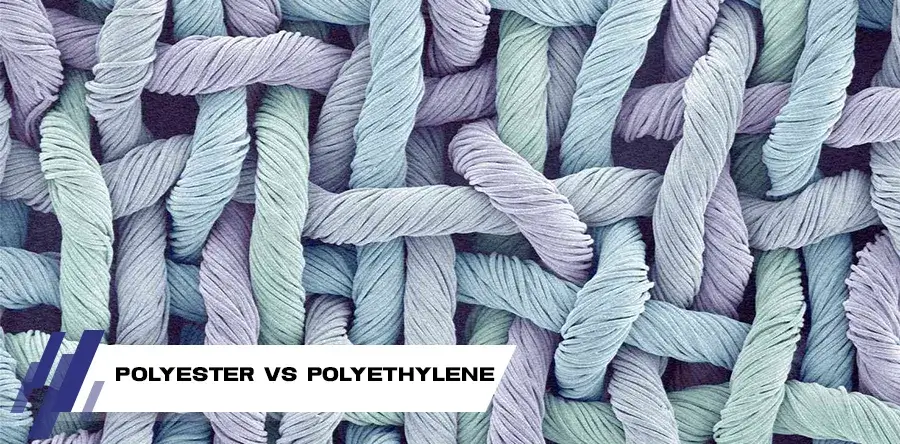
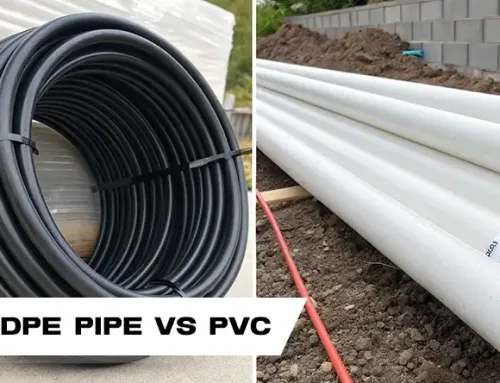
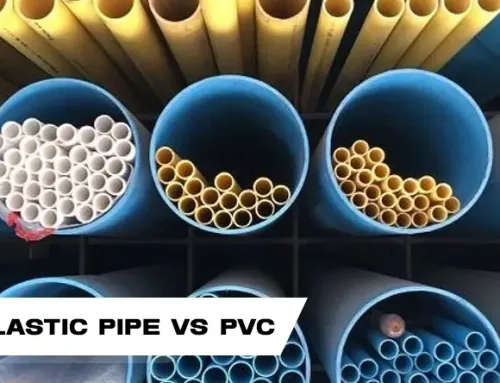

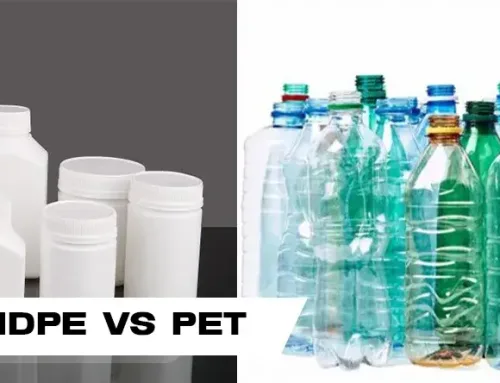
Leave A Comment